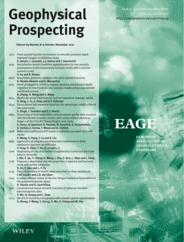
Full text loading...
As an efficient geophysical exploration technique, airborne transient electromagnetics shows strong adaptability to complex terrains and can provide subsurface resistivity information rapidly with a dense spatial coverage. However, the huge volume of airborne transient electromagnetic data obtained from a large number of spatial locations presents a great challenge to real‐time airborne transient electromagnetic interpretation due to the high computational cost. Moreover, the inherent non‐uniqueness of the inverse problem also limits our ability to constrain the underground resistivity structure. In this study, we develop an entirely data‐driven convolutional neural network to solve the airborne transient electromagnetic inverse problem. Synthetic tests show that the convolutional neural network is computationally efficient and yields robust results. Compared with the Gauss–Newton method, convolutional neural network inversion does not depend on the choices of an initial model and the regularization parameters and is less prone to getting trapped in a local minimum. We also demonstrate the general applicability of the convolutional neural network to three‐dimensional synthetic airborne transient electromagnetic responses and the field observations acquired from Leach Lake Basin, Fort Irwin, California. The efficient convolutional neural network inversion framework can support real‐time resistivity imaging of subsurface structures from airborne transient electromagnetic observations, providing a powerful tool for field explorations.

Article metrics loading...

Full text loading...
References


Data & Media loading...

